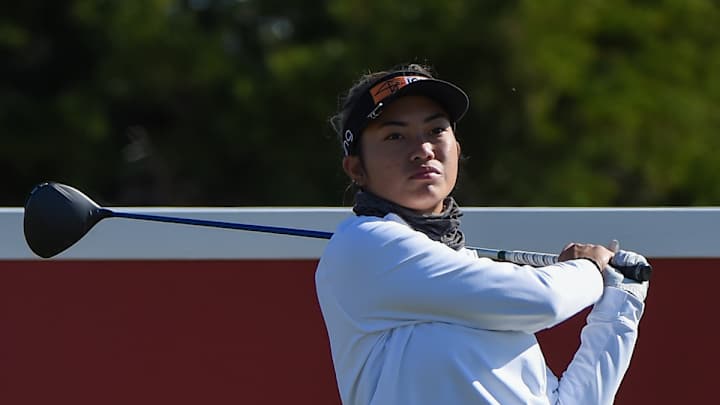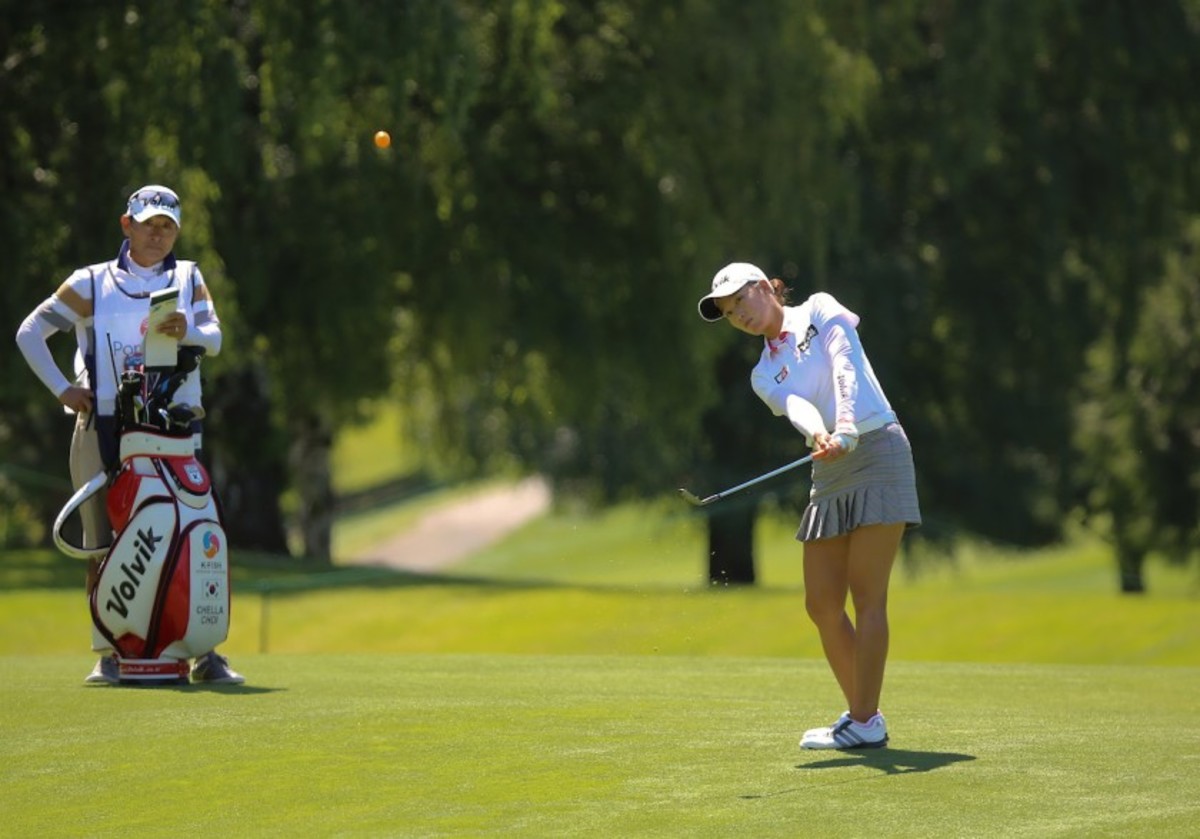Year-end numbers in golf don’t lie

Numbers don’t lie, but people who use them often do.
Like me? Yeah, probably.
With this week’s U.S. Women’s Open scheduled at Champions Golf Club in Houston, this seems like a good time to check on women’s golf and do what everyone secretly wants: compare them with male golfers.
Statistics don’t tell the whole story in golf. They may not even mean that much, especially this year because every tour’s 2020 schedule was dramatically reduced because of COVID-19. The smaller the sampling, the less statistically accurate the stat.
Still, I thought it would be entertaining to find comparable statistical categories from the PGA, LPGA, Korn Ferry, Champions, European and Japan tours and see what the I’m-not-lying numbers say. The tours feature different courses, levels of difficulty, terrain, setups and weather. So, comparing these numbers is like comparing apples and tangelos. (Mangoes are delicious, too.)
What the numbers indicate is that the women are straight shooters. The world’s straightest driver is considered to be a savant named Fred Funk, now bowling his ball down the middle of most Champions Tour fairways. The late Calvin Peete led the PGA Tour in driving accuracy for 10 straight years, and Funk, the 2005 Players Championship winner, led six out of 10 years during a run into the early 2000s. At 64, Funk is cementing his legend. He hit 84.2 percent of fairways in 2020.

That number is impressive, but the LPGA’s Chella Choi inched ahead of him last weekend, moving to 84.4 percent. Marina Alex, 83.4 percent, and Jennifer Chang, 82.4 percent, are the next most frequent fairway fliers in the women’s stats. Nine other LPGA players hit 80 percent or more of fairways while senior Olin Browne, at 80.5 percent, was the only other male player above that mark. Remove the pesky Funk gentleman and Choi, Alex and Chang would rank 1-2-3 in driving accuracy on every other tour’s stat sheet.
Nobody hits it straighter than the LPGA stars. It is not up for debate.
Now, let’s herd the elephant out of the room. No, the women don’t drive it as far as the men.
Bryson DeChambeau isn’t the only one driving it freakishly long distances these days. In fact, the Incredible Bulk ranks only ninth on my multi-tour driving-distance list. South Africa’s Wilco Nienaber is golf’s new King Kong. He averaged – averaged! – 341.4 yards per drive. That was nearly 10 yards longer than John Somers (331.5), the KFT’s big knocker, and 20 yards more than DeChambeau (322.1), who ranked No. 1 on the PGA Tour.
Bianca Pagdanganan, a 23-year-old from the Philippines and former University of Arizona star, might be the longest hitter ever on the LPGA Tour. She averages 284.66 yards per drive, nearly 5 yards longer than Anne van Dam (281.8) of The Netherlands. Pagdanganan is on track to break Karin Sjodin’s all-time tour distance mark of 284.47, set in 2006.
How does she stack up against the men? Pagdanganan would rank 180th on the PGA Tour, 158th on the KFT list and 16th on the Champions Tour. Retief Goosen, who led the seniors at 297.6 yards, would rank 92nd on the PGA Tour.
Do you really need a summation of the obvious? All right, these guys are long. Duh.
Here’s a mild surprise: The LPGA boasts some of the game’s best sand players. Four of the top seven players in sand-save rankings are LPGA players.
Ryuko Tokimatsu of the Japan Tour leads at .840 in sand saves in limited play. He got up and down from bunkers 21 out of 25 times in six events.
Harry Hall of the KFT was next at 73.5 (25 of 34). Then comes Mike Weir of the Champions Tour at 69.4, followed by a bevy of women led by Klara Spillkova (68.9) and Minjee Lee (.672). Bud Cauley was atop the PGA Tour at 66.7. Nine women ranked above 60.0.
There is no sweeping conclusion to be made here, just that LPGA players often don’t get credit for their sand skills, but the numbers indicate that maybe they should.
Two of the top four players in greens hit in regulation are from the LPGA. S.Y. Kim of South Korea ranks second at .784, well behind Will Zalatoris at 81.1 on the KFT. Zalatoris performed so well, he played himself onto the PGA Tour.
Brooke Henderson is fourth at 77.4, barely back of Ernie Els of PGA Tour Champions at 77.6. The women had notably higher percentages than the leading PGA Tour players, Furyk at 74.2 and Kyle Stanley, 72.5, and the top European Tour player, Jordan Smith, 73.9. Put another feather in their headwear.
There are two putting categories shared by most tours: putts per green hit in regulation, which shows who’s converting birdies, and putts per round, which reflects who’s good at scrambling. These numbers show that two KFT players, Hall and Ollie Schniederjans, are among the best putters.
Hall, an Englishman who played college golf at the Nevada-Las Vegas, led the KFT in putts per round (27.50), barely ahead of Schniederjans (27.52) and was second to Schniederjans in putts per GIR (1.679 to 1.662). The European Tour’s Marc Warren was third in putts per round and tied for seventh in putts per GIR.
No LPGA players had putting stats good enough to get inside the top 15 in either category. S.Y. Kim led the LPGA in putts per GIR at 1.730, which would put her 23rd on the PGA Tour. Leona Maguire had the lowest putts per round number among the women, 28.73, which would place her 86th among PGA Tour players.
Putting stats are the most skewed among golf stats because they are affected by the point from which a player putts. A great iron player who hits approach shots close will fare better in putts per GIR, and a poor iron player who misses greens and chips it close will look better in putts per round. So, neither stat might reflect a player’s actual putting ability.
The best putting stat remains golf statistician Mark Broadie’s strokes gained per round, which compares golfers’ putting performances against their peers. Unfortunately, the LPGA keeps only basic, almost primitive, stats and doesn’t have that level of detail.
Scoring ultimately is the only stat that matters. Webb Simpson of the PGA Tour had the lowest actual average, 68.06. S.Y. Kim of the LPGA was second at 68.11. Zalatoris led the KFT (68.44), Bernhard Langer led the seniors (68.28) and Tommy Fleetwood ranked first in Europe (69.50).
What all this means for this week’s U.S. Women’s Open is that you’ll see two of the longest hitters in LPGA history, Pangdanganan and van Dam, plus some of the world’s best bunker players and straightest drivers.
It should be worth watching. The numbers don’t lie.
Sign up to receive the Morning Read newsletter, along with Where To Golf Next and The Equipment Insider.
